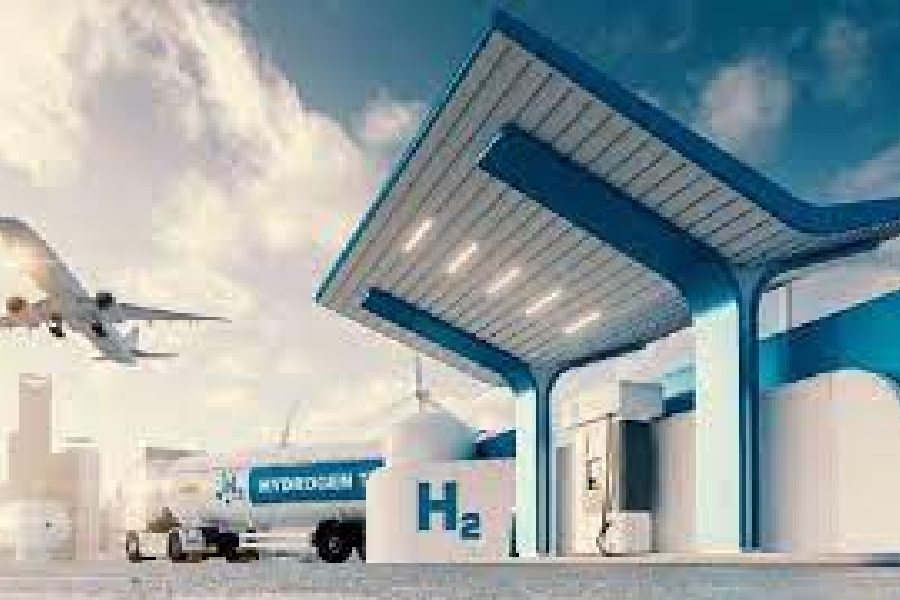Reliance Electrolyser Manufacturing, Adani New Industries, L&T Electrolysers and Bharat Heavy Electricals are among 21 companies that have bid for the government’s incentives to set up 3.4 GW of annual capacity for manufacturing electrolyser, a critical component required for hydrogen production.
According to an official statement, the bids came in response to a tender by Solar Energy Corporation of India (SECI), inviting players for setting up 1.5 GW capacity for electrolyser manufacturing. The bids were invited on July 7 this year.
On July 10, state-owned SECI also invited bids for selection of green hydrogen producers for setting up production facilities of 4,50,000 tonnes of green hydrogen under the Strategic Interventions for Green Hydrogen Transition (SIGHT) Scheme (Mode-1-Tranche-I).
The other companies that have bid for incentives under the scheme are Hild Electric Private, Ohmium Operations, John Cockerill Greenko Hydrogen Solutions, Waaree Energies, Jindal India, Avaada Electrolyser, Green H2 Network India, Advait Infratech, ACME Cleantech Solutions, Oriana Power, Matrix Gas and Renewables, HHP Seven, HomiHydrogen, Newtrace, C. Doctor & Company, Pratishna Engineers and LiveHy Energy.
Meanwhile, 14 companies have evinced interest for incentives to set up production facilities of 5,53,730 tonnes of green hydrogen, against the offered capacity of 4,50,000 tonnes.
These firms are ACME Cleantech Solutions, Torrent Power, UPL, GH4INDIA, Aneeka Universal, Sembcorp Green Hydrogen India, Greenko ZeroC, CESC Projects, JSW Neo Energy, Welspun New Energy, Avaada GreenH2, Reliance Green Hydrogen and Green Chemicals, HHP Two, and Bharat Petroleum Corporation.
In January 2023, the Union cabinet had approved the National Green Hydrogen Mission (NGHM) with an outlay of Rs 19,744 crore with an aim to make India a global hub for manufacturing this clean source of energy.
The mission is expected to lead to the development of 5 million tonnes per annum of green hydrogen production capacity by 2030.
For this, India will require 60-100 GW electrolyser capacity and 125 GW renewable energy capacity. Currently, around 30 per cent — around 130 GW — of India’s installed capacity is renewable energy (excluding large hydro and nuclear). If India is to achieve its green hydrogen target, that alone will need 125 GW of this 130 GW installed capacity.
The mission aims to develop India as a global hub for production, use and exports of green hydrogen and its derivatives. It is expected to promote multilateral engagement and collaboration with various international efforts in hydrogen and fuel cells.
The mission provides for setting up of two green hydrogen hubs in the initial phase.
The ministry of ports, shipping and waterways has identified three major ports — Deendayal, Paradip and V O Chidambaranar (Tuticorin) Ports — to be developed as hydrogen hubs.
Green hydrogen is produced by using renewable energy to split water into hydrogen and oxygen.
In contrast, the conventional process of making hydrogen uses fossil fuels. Both processes use a piece of equipment known as an electrolyser to perform the split.
India consumes around 5 mt of hydrogen for various industrial purposes such as petroleum refining, manufacturing of ammonia for fertilisers, methanol production, and the treatment and production of metals, but 99 per cent of its use is in the fertiliser and petroleum industries.
Most of this hydrogen is sourced from fossil fuels through the process of steam reformation of natural gas, naptha and is referred to as grey hydrogen.










